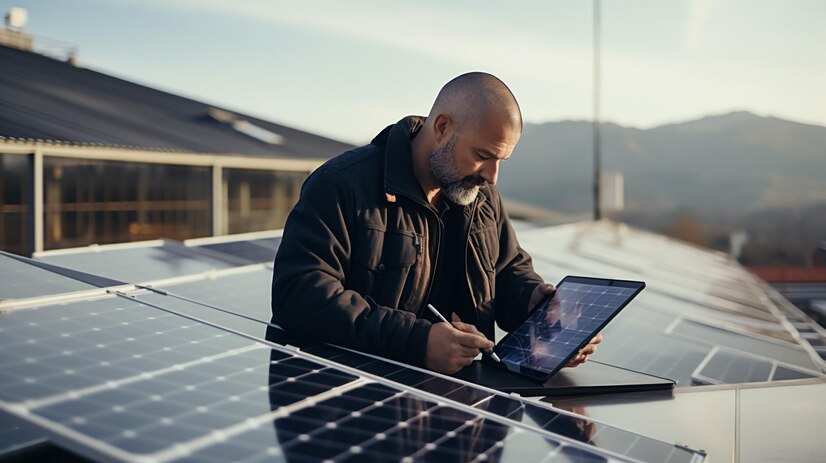How to Calculate Your Solar Energy Needs
Best Renewable Energy Company in Nigeria > Article > How to Calculate Your Solar Energy Needs
How to Calculate Your Solar Energy Needs

Key Points:
1. Determining the size of your solar installation is essential to ensure it meets your energy consumption needs and maximizes the benefits of solar energy.
2. Calculating your solar energy needs helps you understand the required solar panel capacity, battery storage, and potential cost savings.
3. By accurately assessing your energy needs, you can design an efficient solar system that reduces your reliance on the grid and minimizes your carbon footprint.
4. The benefits of calculating solar energy needs include reduced electricity bills, increased energy independence, and contributing to a sustainable future.
As the world gravitates towards cleaner and more sustainable energy solutions, solar power has emerged as a promising option. However, determining the size of a solar installation based on energy consumption can be a daunting task In this comprehensive guide, we will walk you through a step-by-step process of calculating your solar energy needs, offering expert insights, industry best practices, and real-life examples.
Step 1: Assess Your Energy Consumption
Initiate the process by conducting a meticulous evaluation of your energy consumption, encompassing both present and projected future needs. Look into the details of your electricity bills spanning the previous year, meticulously examining the data to ascertain your average monthly and annual energy usage trends. Moreover, anticipate any forthcoming alterations in your energy requirements, such as the incorporation of additional appliances or the transition to an electric vehicle, to ensure a thorough assessment that accounts for all potential factors influencing your energy consumption.
Step 2: Understand Solar Radiation in Your Area
Next, to optimize your solar energy system, it’s imperative to grasp the solar radiation levels specific to your geographical location, as they directly influence sunlight availability for energy generation. Utilize various online tools and resources that leverage historical data to assess the solar potential of your area accurately. This step is pivotal in ensuring the efficiency and output of your solar installation align with your expectations and energy needs. By comprehending solar radiation patterns, you can make informed decisions regarding panel orientation, tilt angles, and system sizing, ultimately maximizing the performance and benefits of your solar investment.

Step 3: Calculate Your Solar Panel Capacity
Now that you’ve gathered information on your energy consumption and assessed solar radiation levels in your area, the next crucial step is to determine the required capacity of your solar panels. Typically, a standard solar panel can generate approximately 250 to 350 watts of electricity per hour under optimal conditions. To ascertain the number of panels necessary for your installation, simply divide your total energy consumption by the average output per panel. This calculation provides an initial estimate of the panel quantity required to meet your energy needs efficiently.
Step 4: Consider Other Factors
In addition to solar panel capacity, when planning your solar energy system, it’s essential to go beyond just solar panel capacity and take into account a range of additional factors to ensure optimal performance. These factors include the orientation and tilt angle of the panels, shading issues that may arise from nearby structures or trees, and the efficiency of the solar panels you select. Neglecting these aspects can result in suboptimal energy production and decreased overall system efficiency. To navigate these complexities effectively, it’s highly recommended to consult with a knowledgeable solar professional who can conduct a thorough assessment of your site and provide expert guidance on the ideal configuration for your installation.
Step 5: Determine Battery Storage (Optional)
While transitioning to solar energy system, considering battery storage emerges as a pivotal point. While not essential, integrating battery storage can significantly enhance the efficacy and resilience of your solar setup. This addition empowers you to harness surplus energy generated during peak sunlight hours and store it for later use, especially during evenings or overcast days when solar production diminishes. By opting for battery storage, you effectively extend the utility of your solar panels beyond daylight hours, ensuring a continuous and reliable power supply.
When contemplating the integration of battery storage into your solar energy system, it’s essential to assess your specific energy requirements and objectives. One of the primary benefits of battery storage lies in its ability to provide backup power during grid outages or periods of low solar production. To determine the appropriate size of your battery storage system, consider factors such as your desired backup duration and the capacity of your solar panels.
By accurately assessing and calculating your solar energy needs, you can reap several benefits. Firstly, you’ll experience a significant reduction in your monthly electricity bills, as solar energy can offset a significant portion of your energy consumption. Secondly, by generating your electricity, you’ll reduce your reliance on the grid and contribute to a greener environment. Finally, a solar installation increases the value of your property and provides a long-term, cost-effective energy solution.
In conclusion, understanding how to calculate your solar energy needs is crucial before investing in a solar installation. By following the step-by-step process outlined above and considering additional factors, you can design an efficient solar system that caters to your energy needs. Don’t miss out on the numerous benefits of solar energy – take the first step towards a sustainable and cost-effective future by exploring solar solutions today!

